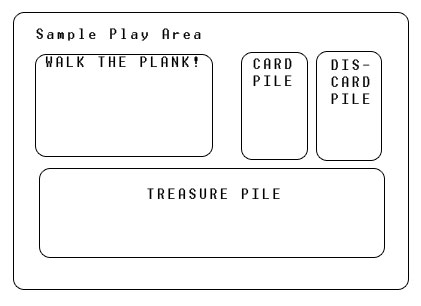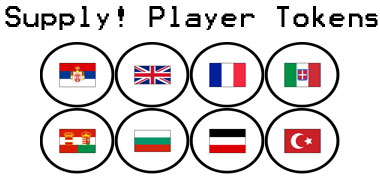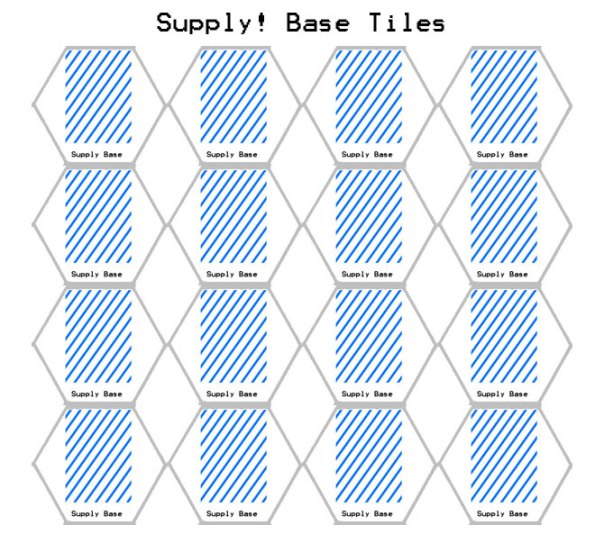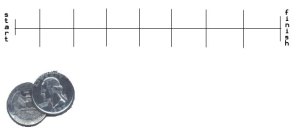Archive
GDCU Level 8: The Grief Game
I’ve fallen behind in my Game Design Concepts coursework. Just having difficulty concentrating. I’m trying to do readings in between cases in grand jury duty, but it’s difficult when they play movies on the big screen and laugh and have a good time… I wind up joining them 🙂
Level 8‘s assignment is as follows:
Create a concept for a game that is built to appeal specifically to griefers (i.e. Bartle’s “Killer” player type). Post it in the forums. You do not need to create the rules for a game. Just create a concept that includes enough information to communicate what the gameplay would be like
Your post should include the following:
- Target medium or platform. Is this a PC game? Console? Board or card game? Tabletop RPG?
- Number of players
- A paragraph or two describing the game concept
- Another paragraph explaining why this concept will appeal to the target market.
I was inspired by the light cycles of Tron, probably because I had recently viewed the Flynn Lives trailer.
Target platform: Console, PC (Online)
Number of Players: 1-4
Concept
The play area takes place sandbox that players will turn into a maze. Players either compete against each other or AI. Each level has random bonus and destructive tiles placed in the play area. For example, a bonus tile could allow players to destroy a blocking wall, or a destructive tile which, when activated (stepped on), creates a wall blocking the player’s forward movement.
Each corner is a “starting location” where one player or AI begins the level. The goal is to be the first player to reach the center of the map. Players can use various objects, one per turn, to block or influence the movement of their opponent. For example, if you have been moving to your left, I can drop a wall preventing movement in that direction.
In order to prevent the game from being “stuck” where one player is boxed in by walls, there is a slowly recharging wall-breaking power that will allow players to break one wall if they find themselves boxed in… or they can use it to bypass a wall to help them win the game.
Appeal
It’s easy to make a grief game if you think only in terms of Player A killing Player B. I wanted to do something a little more cerebral. An explorer or achiever would be interested in getting to the goal first to finish the level, perhaps uncovering any bonus tiles along the way. Here all players can prevent the others from reaching the goal, while simultaneously trying to achieve the goal.
This game appeals to a “griefer’s” need for being victorious both in terms of achieving his goal while preventing others from finishing the game.
link to forum thread
#GDCU Level 6: The Game
The assignment for this Thursday’s Game Design Concepts class was as follows:
Option 3 (Exploring the boundaries of games): Design a game that has intentionally incomplete rules, requiring player authorship of rules during the play of the game in order for it to be playable. Post your (incomplete) rules.
Never give a creative (such as myself) an assignment like this, or allow them to actually choose something like this, because we will find the lowest level to question the actual assignment while exploding the concept of it.
In my game, I question what the game space is (I don’t define it). I assign a goal, but do not define how to get there. What is a game, and what is a goal? Do we need always need to have a game where rules are active? Do we always need a game with a goal? What if reaching the goal is as undefined as the rules, or even the game space?
Here is my design:
Number of Players: 2-6 (or more!)
Rules:
- All players gather in the middle
Win:
- First player to reach 500 wins
link to post on gdcu forums
GDCU Level 4 Game Design: Bomba Yar! Keelhaulin’ on the High Seas
Bomba Yar! Keelhaulin’ on the High Seas
A card game based on the Nintendo NDS Sims 2 mini-game “Keelhaulin’”
Bomba Yar! Are ye a landlubber or a lover of life on the high seas? Ye want to be a pirate ye say? Aye! Have some rum and join us in a wee game of cards. If ye win me gold, ye get to set sail with us on the morrow. If ye don’t, to the plank with ye!
CARDS
[These cards can be made with 112 index cards with the card name written on them]
|
PIRATE CARD NAME |
NUMBER OF CARD |
| Pirate |
16 |
| Old Sea Dog |
16 |
| Deckhand |
16 |
| Lookout |
16 |
| Wench |
16 |
| Skeleton |
16 |
| Cannon* |
8 |
| Bottle of Rum* |
8 |
*Cannon and Bottle of Rum cards are Bonus cards, which are described below.
NUMBER OF PLAYERS
2-8 scurvy-free pirates, preferably with lots of rum.
GOLD COINS
100, each with a value of 10 points. The can be poker chips, pennies, etc.
PLAY AREA
- Draw pile
- Discard pile
- “Walk the plank!” pile
- Treasure chest coin pile

OBJECT OF THE GAME
The first player to reach 500 points wins.
RULES
- Select a dealer. The dealer shuffles and distributes 8 cards to each player. Play is clockwise starting from the player to the left of the dealer.
- Draw a card, either from the draw pile or the discard pile. If you find or already hold one or more Cannon and/or a Bottle of Rum cards you may play it immediately.Cannon card – place the card in the “Walk the Plank!” pile and choose a player. The chosen player loses their next turn.
Bottle of Rum – place the card in the “Walk the Plank!” pile and draw at least 2 cards from the draw pile. You cannot have more than 10 cards in your hand. For example, if you have 9 cards, you can only draw one card. - If you have 3 or 4 of the same pirate card, make them walk the plank! Place the matching cards in the Walk the Plank! pile face up. For each pirate card you have removed from the game, place one gold coin in the treasure chest coin pile.
- Discard. After drawing a card and playing your hand (if applicable), discard one card into the discard pile. Play continues in a clockwise motion.
WINNING THE GAME
Round Win
The first player to discard all of their cards in a round wins the round and takes whatever booty is in the treasure chest pile. Each coin is worth 10 points.
Game Win
The first player to win 500 points wins the game.
Changed Mechanics
Scoring System – the original game awarded points for each card that walked the plank and gave points towards the booty if any card remained in that suit as the computer removed the card from the game. As this cannot be done without the risk of someone seeing the remaining cards in the deck, this scoring mechanic was altered.
Ghosts – players were able to play ghost cards (one for each suit) if that suit had walked the plank. This feature was removed as the scoring system changed.
Number of Cards – the number of cards in the game was increased significantly to allow for an increased number of players.
Cannon – made it a direct attack feature that would remove a turn from a selected player rather than points.
Number of Players – the original game is you versus the AI. This game is between 2-8 players.
Removed Cards – removed one of the wenches to keep the deck as small as possible.
GDCU Level 3 Game – Supply!
Monday saw the publication of the third lesson in the Game Design Concepts class. The homework was to design a game with the following (there were three options of difficult, I chose the hardest):
The theme must relate to World War I. The primary objective of players cannot be territorial control, or capture/destroy.
You cannot use territorial control or capture/destroy as game dynamics. That is, your game is not allowed to contain the concepts of territory or death in any form.
As above, and the players may not engage in direct conflict, only indirect.
As it turns out, I’m not at all versed in table-top wargaming except for a wee bit when my first step-father tried to get me to play him in some American Civil War games (no matter which side I chose I always lost… typical me). The good thing is is that this isn’t a territory game, but the hard part was how not to create direct conflict, especially since the required theme is World War I. After some thinking, I realized that war isn’t about acquiring bigger guns and killing people; there’s also the help aspect. I came up with the idea of providing supplies to a base, with hexagonal tiles providing both a fog of war as well as affecting the player’s movement as they make their way towards the supply base.
Supply!
Players
Number of players: 2-4
 Players choose one of 8 countries that they will represent:
Players choose one of 8 countries that they will represent:
- Allied
- France
- Great Britain
- Italy
- Serbia
- Central
- Austria-Hungary
- Germany
- Ottoman Empire
- Bulgaria
 The player then takes the base tile which corresponds to their selected country.
The player then takes the base tile which corresponds to their selected country.
Board Layout
 The supply base tiles are stacked and placed in the center of the playing area.
The supply base tiles are stacked and placed in the center of the playing area.

Board tiles are tiles which affect the player’s ability to move, and can affect their turn. Below are the tiles in Supply!, the number in the game, and the effect they have on the player:
| TILE TYPE | # OF TILES | EFFECT |
| tree | 25 | no effect |
| road/track | 3 | +2 movement |
| river | 3 | -1 turn |
| mortar attack | 3 | player returns to base or supply base, depending upon where they started |
| gas attack | 3 | -1 turn |
| trench | 7 | player’s next move is parallel to trench |
| enemy infantry | 5 | -1 turn |
| ally infantry | 5 | +1 turn |
Board tiles are placed faced down and mixed, then placed on the playing area in the following configuration:

- Yellow = player base
- Blue = board tiles
- Black = supply base tile stack
Rules
Players determine who goes first, with turns going clockwise.
Play begins in the player’s home base. The player selects the tile adjacent to the base and turns it over to reveal the type of board tile he landed on. Player follows the outcome as indicated by the tile type (e.g. if the player reveals a river, gas attack, or enemy infantry tile he loses his next turn; if he reveals a mortar attack tile he returns to base; if an ally infantry tile is revealed he goes again; if he reveals a road/track tile his next turn results in two moves. Trees do not effect a player). At the start of the player’s next move, he removes the tile he revealed from the board and replaces it with a randomly selected face-down pile; he returns his original tile face down to this pile.
When a player has successfully reached the supply base, he removes one supply token from the stack. He must then make his way back to his base using the movement rules outlined above.
Win State
A player wins a game when he is the first to collect four supply base tokens.
Special thanks to Kevin for discovering the mortar attack bug! Link to forum post.
GDCU Level 1
The first Game Design Concepts lecture was published on Monday. It’s basically an introductory lecture with some basic vocabulary so that those participating can have a level ground of discussion (game studies is still so new that there has yet to be any real formulation of keywords). After discussing what makes a game, Schreiber gave us a 15 minute design a basic game challenge. Below is what I came up with while serving on a grand jury on Tuesday. The guidelines were as follows:
Four Steps:
- Draw a Path
- Come up with a theme or objective.
- Create a set of rules to let the player move from place to place.
- Create conflict.

Race for Candy
Design
Race for Candy is a basic race-to-the-end game. It can be done on paper (w/pen) or on a sidewalk (w/chalk), requires a minimum of 2 players, and at least one two-facedcoin. Draw a straight line and divide it into as many sections as you’d like as illustrated above.
Theme
It is Halloween and you and your friend are trying to collect as much candy as possible before getting home for the night.
Rules
Players flip a two-sided coin. One side, say heads, let’s the player move one square forward, while the other, tails, wins the flipper two forward movements while forcing the other player to move backwards one. For each space you wind up in at the end of the turn you gain “one candy” (you can simply mark how many you have on a piece of paper. For example, if the players are at the starting line and the first player flips heads, she moves forward one space and gets one candy. If she were to flip tails, she would move ahead two boxes, but would only earn one candy (her opponent would move back one square but would not earn a candy).
The game ends when both players have reached the finish line. The winner has the most candies, the loser just gets to laugh at the winner when they have to go to the dentist for cavities.
Observations
I added the head = 2 steps forward, one step back mechanic because I wanted to create some sort of tension between the players. While a player would want to move forward on heads as much as possible (because they get the most candy that way), tails would have a benefit (or not, depending upon which player you are) as well.
For a basic game thought out in between testimony, it’s not too too bad =P
Game Design Concepts Course

Challenges for Game Designers
For those of you interested in game design yet don’t have the funds to go to one of them fancy schools, designer and scholar Ian Schreiber has constructed a free online course for you to take part in. The classes are held every Monday and Thursday via a wordpress blog, and there’s also a message board and wiki available to students as well. You can find the syllabus for the course here.
For those of you simply interested in finding out what the textbook is as well as what the recommended reading are:
- Challenges for Game Designers – Brenda Brathwaite and Ian Schreiber
- Understanding Comics – Scott McCloud
- A Theory of Fun – Raph Koster